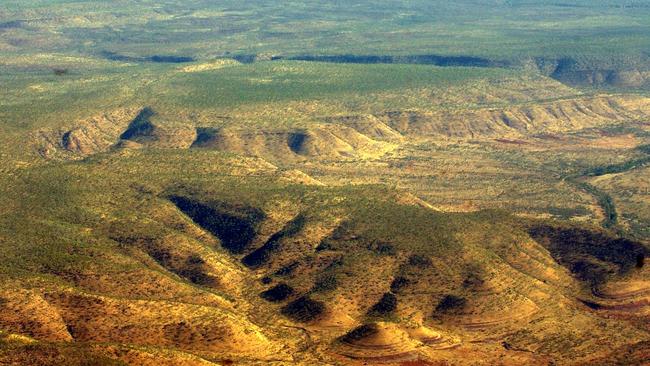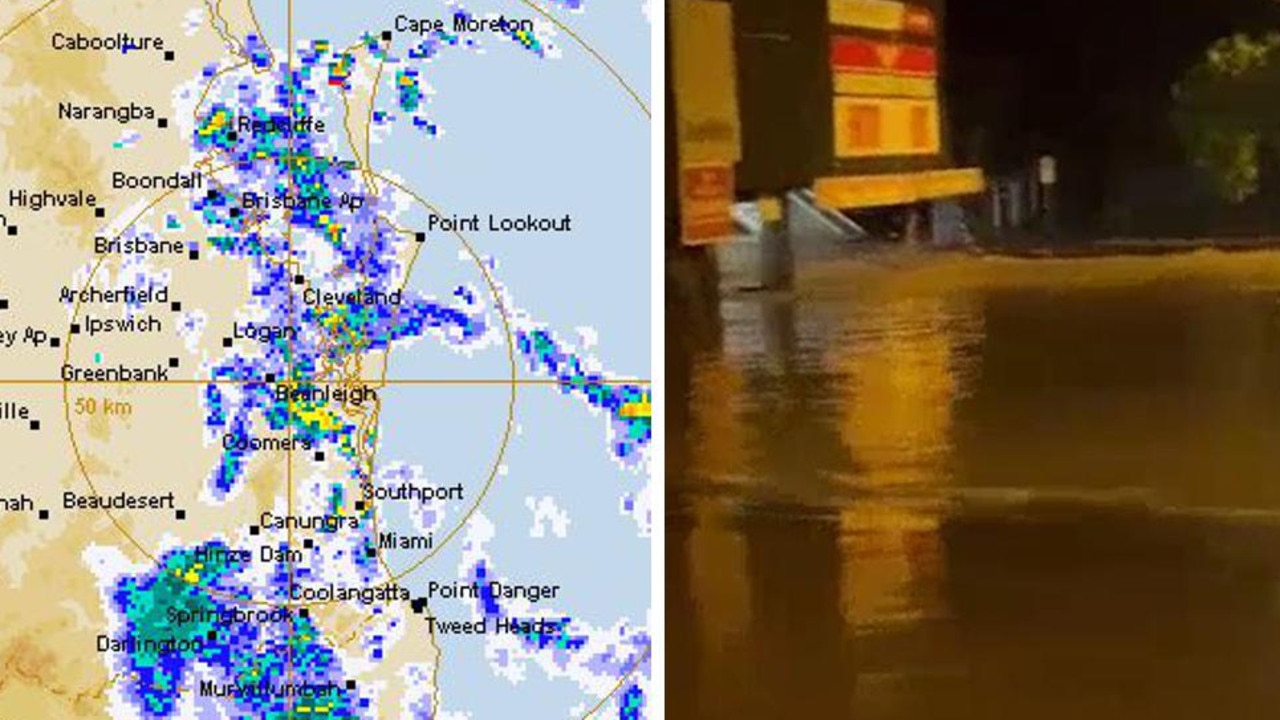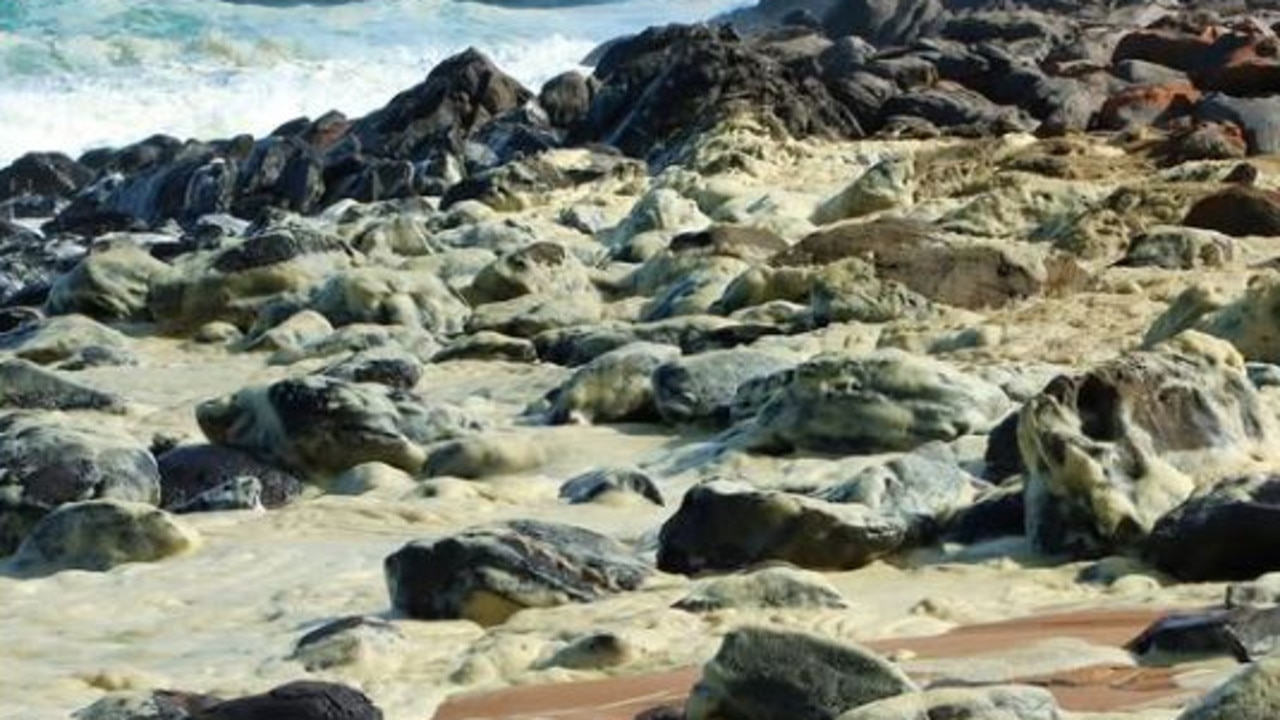NASA study says the Canning Basin in WA is being depleted too fast
WHAT NASA saw from space has the world worried. But one Australian state reckons they’ve got it all wrong, and they’re ignoring the warnings.

THE world is running out of water, with one state in Australia having their reserves depleted at an alarming rate.
According to a NASA-led study, more than half of the world’s large underground water sources were being drained at rates placing them at serious risk of drying up.
It found 21 out of the 37 basins were being depleted quicker than they were being replenished.
Among those identified was the Canning Basin in Western Australia’s northwest.
This precious natural resource was singled out as being used at the third-highest rate in the world, losing an estimated 9.4 millimetres per year.
The most-stressed underground water source is the Arabian Aquifer, in Saudi Arabia, followed by the Indus Basin in India and Pakistan.
MORE: NASA’s discovery shows just how quickly the Earth is running out of water.
The report did point out that the Great Artesian Basin, which occupies 1.7 million sq km beneath Queensland, NSW, SA and the Northern Territory, was among the world’s healthiest.
The peer-reviewed study, published in the journal Water Resources Research, blames the Canning Basin’s high depletion rate on the state’s water-intensive mining industry.
But the international scientific assessment has been rejected by the WA government which branded the study’s conclusions — that mining caused the decrease — as “incorrect”.
The WA Department of Water says its own “detailed and extensive” records dispute those findings, saying their own scientists consider the Canning Basin to be a “largely undeveloped water resource with potential to support future growth in the Pilbara and Kimberley”.
“Reports that the Canning Basin is being depleted through overuse by mining differ significantly from the scientific assessments of the Department of Water which manages and allocates water from this resource,” a spokeswoman told news.com.au.
“The department last year allocated 50GL/year of water for future use by towns, agriculture and mining from the west Canning Basin, and is considering a further 50GL/year of water to be allocated based on more recent assessment work.”
She said the Department of Water was in the midst of studying the Canning Basin using on-ground drilling and an airborne electromagnetic (AEM) survey that would cover tens of thousands of kilometres.
A climate assessment project led by the CSIRO was also being carried out to determine any climatic affects on Pilbara water supplies, she added.

So how did NASA come up with its assessment?
Researchers used data from NASA’s Gravity Recovery and Climate Experiment (GRACE) satellites (or orbiting satellites) to measure the world’s groundwater aquifers over a ten year period from 2003 to 2013.
The satellites are able to detect slight changes in the Earth’s gravitational pull where large volumes of water were being used or stored.
But the satellites weren’t able to measure the total capacity of the underground water sources.
However the study says the satellite data indicates that some reserves may be smaller than previously thought.
How bad does NASA think it is?
“The situation is quite critical,” Jay Famiglietti, senior water scientist at NASA’s Jet Propulsion Laboratory in California told The Washington Post.
“The water table is dropping all over the world. There’s not an infinite supply of water.”
According to the research, underground aquifers supply 35 per cent of the water used by people throughout the world.
In California, where severe drought is crippling the US state, 60 per cent of its water use is now coming from underground water sources.
Experts there have warned that all California’s water will eventually come from its aquifers by the end of the year.

Could this happen in WA?
While WA is not is the same position as California, most of the water being used in Perth and the southwest of the state has come from groundwater supplies for “several decades as the south west of Western Australia has observed a drying climate trend.”
A WA Water Department spokeswoman added “Groundwater now provides the majority of drinking water for Perth, while the Government of Western Australia in more recent years has invested in seawater desalination plants to provide a climate independent source of water to cater for population growth in a drying climate.”
The WA Government has also invested in a groundwater replenishment scheme, using highly treated waste water.
“These and other innovative approaches are being used to reduce per capita water demands, improve water use efficiency and be well placed for the future,” she added.

So if mining didn’t cause the depletion of the Canning Basin what has?
The department says fewer cyclones and less rainfall are to blame for the drop and criticised the study’s method of using gravity as a measure of water storage saying there were too many variables.
“Department of Water scientists have noted that the NASA results are affected by the declining pattern of cyclones over the ten year study period,” the department says. “The time period over which NASA conducted its GRACE survey does not provide a sufficient dataset to establish a proper relationship between rainfall and aquifer recharge, nor to assess long term aquifer performance. This view is supported by the Commonwealth Scientific and Industrial Research Organisation (CSIRO).
“This potential for uncertainty and inaccuracy through GRACE is shared by the National Water Commission in its paper Assessment of GRACE satellites for groundwater estimation in Australia (2012).”



